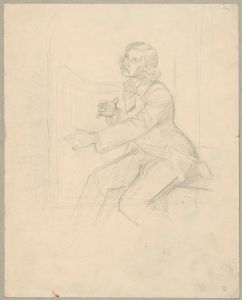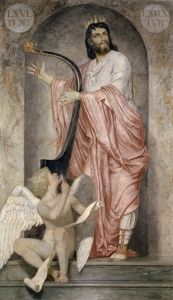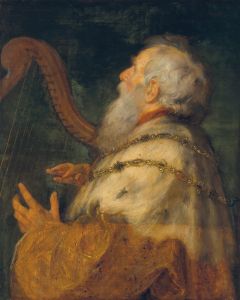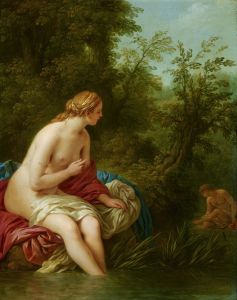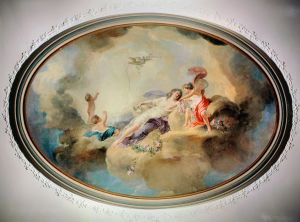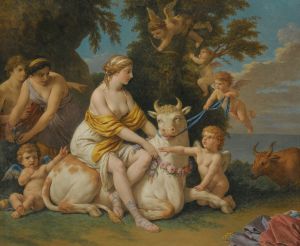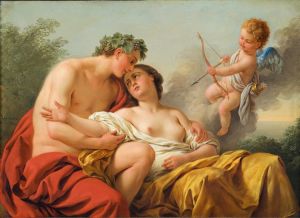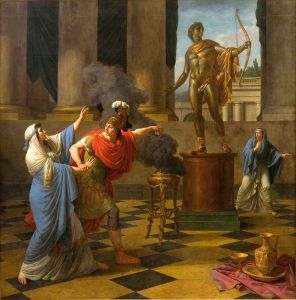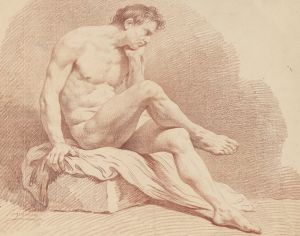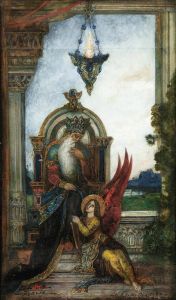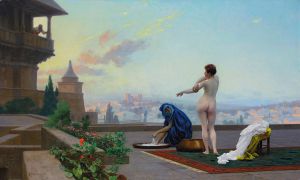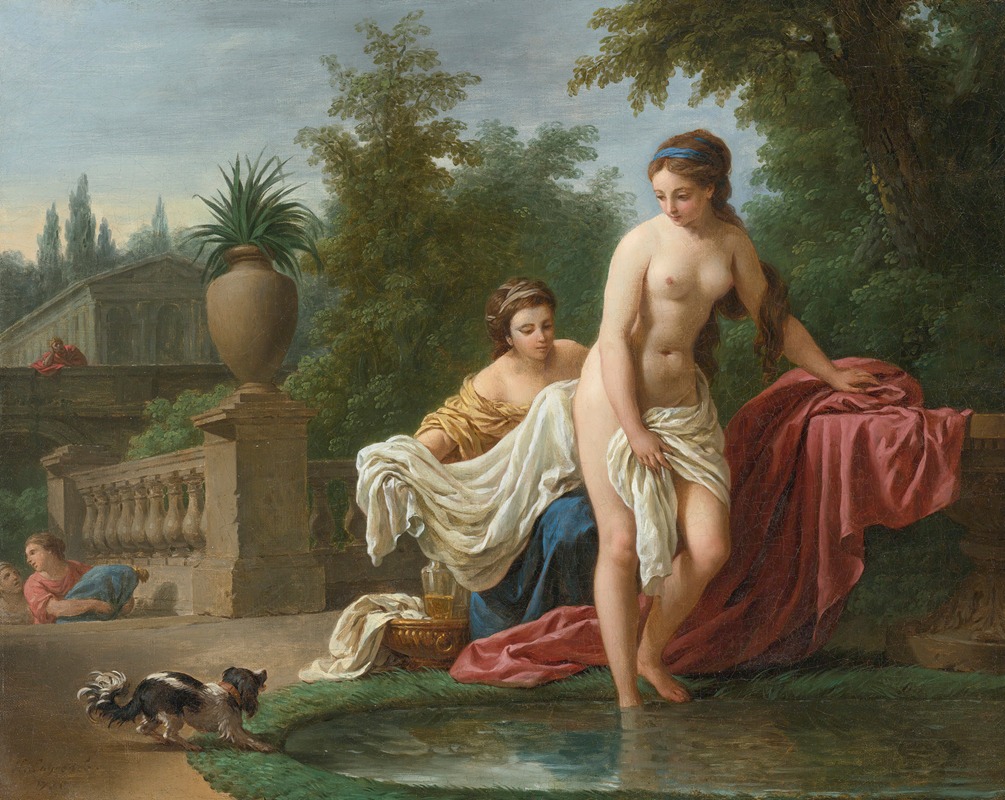
David and Bathsheba
A hand-painted replica of Louis-Jean-François Lagrenée’s masterpiece David and Bathsheba, meticulously crafted by professional artists to capture the true essence of the original. Each piece is created with museum-quality canvas and rare mineral pigments, carefully painted by experienced artists with delicate brushstrokes and rich, layered colors to perfectly recreate the texture of the original artwork. Unlike machine-printed reproductions, this hand-painted version brings the painting to life, infused with the artist’s emotions and skill in every stroke. Whether for personal collection or home decoration, it instantly elevates the artistic atmosphere of any space.
Louis-Jean-François Lagrenée was an 18th-century French painter known for his works in the Rococo style, which often depicted classical and mythological themes. One of his notable paintings is "David and Bathsheba," which illustrates the biblical story of King David and Bathsheba, a narrative found in the Old Testament.
The story of David and Bathsheba is a well-known biblical tale from the Second Book of Samuel. It recounts how King David, while walking on the roof of his palace, saw Bathsheba, the wife of Uriah the Hittite, bathing. Captivated by her beauty, David summoned her to his palace, and they had an affair, which led to Bathsheba becoming pregnant. In an attempt to conceal his wrongdoing, David called Uriah back from battle, hoping he would spend time with his wife and thus believe the child was his. However, Uriah's sense of duty prevented him from going home, leading David to orchestrate Uriah's death in battle. After Uriah's death, David married Bathsheba, but their actions displeased God, resulting in severe consequences for David's household.
Lagrenée's "David and Bathsheba" captures a moment from this complex narrative, focusing on the emotional and moral dimensions of the story. The painting likely reflects the Rococo style's characteristic elegance and attention to detail, with a composition that emphasizes the drama and tension between the characters. Although specific details about the painting's composition and style are not extensively documented, Lagrenée's work typically features graceful figures, soft color palettes, and a delicate treatment of light and shadow, all of which contribute to the emotional impact of the scene.
Lagrenée was a prominent figure in the French art scene during his lifetime. He was born in Paris in 1725 and studied under the renowned painter Carle Van Loo. Lagrenée's talent was recognized early in his career, and he became a member of the prestigious Académie Royale de Peinture et de Sculpture. Throughout his career, he received numerous commissions and accolades, including being appointed as a court painter to Louis XV. His works were exhibited in the Paris Salon, where they were well-received by critics and the public alike.
The painting "David and Bathsheba" is part of Lagrenée's broader oeuvre, which includes a variety of historical, religious, and mythological subjects. His ability to convey complex narratives through his art made him a respected and influential artist of his time. While specific information about the provenance or current location of "David and Bathsheba" is not readily available, Lagrenée's works are held in various museums and collections worldwide, reflecting his enduring legacy in the art world.
Lagrenée's interpretation of the David and Bathsheba story would have resonated with contemporary audiences familiar with biblical tales and the moral lessons they impart. His work exemplifies the Rococo movement's focus on beauty, emotion, and the exploration of human experiences, making "David and Bathsheba" a significant piece within his body of work.





